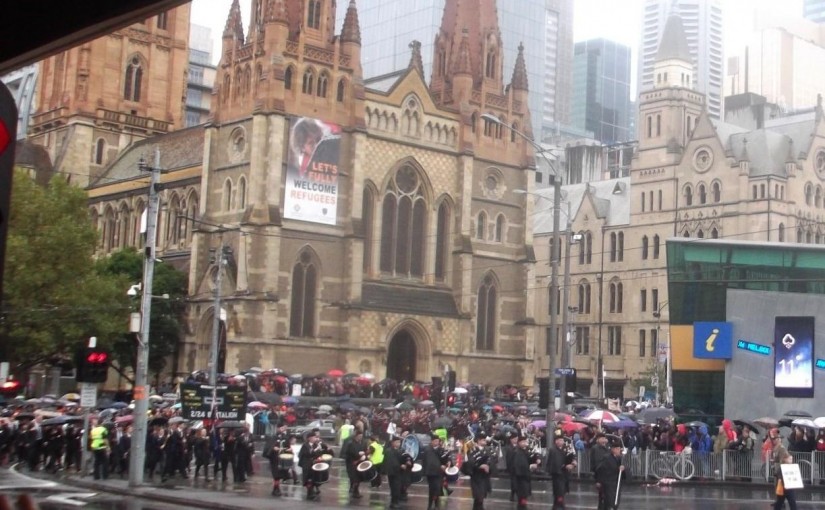SOLDIERS FROM SUSSEX AT GALLIPOLI
The 100th Anniversary
By Richard Holdsworth
While Australian and New Zealand troops (ANZACS) are usually associated with the bravery and deaths suffered at Gallipoli, troops from the county of Sussex also fought and died in this terrible and, ultimately, fruitless campaign during WWl.
Gallipoli is celebrated – if that is the right word – right across the world but never more than in Australia and New Zealand where Anzac Day is the culmination of a year of recognition of what these men and women did 12,000 miles from home.
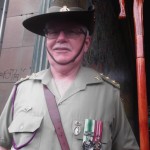
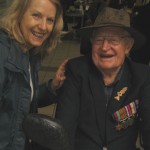
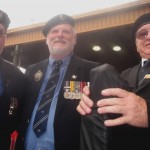
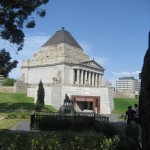
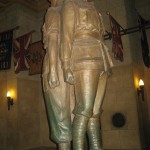
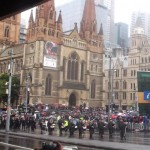
I witnessed my first Anzac Day back in 1960 when writing for the Stock & Station Journal in Adelaide and two men on that paper, Basil Crump, the sub-editor and Jason Hopton, a senior writer, told me the best place to watch the Anzacs march was King William Street. “But we’ll be in the pub straight after Richard, the Grenadier. See you there!” Baz and Jason were too young to be at Gallipoli (they had flown Spitfires in World War ll) but they talked about Gallipoli and I learnt what a dreadful part of the First World War that was.
WINSTON’S GAFFE
With the war descending into a stalemate on the Western Front, Winston Churchill, then the First Sea Lord, came up with a plan to open a second front thousands of miles away in Southern Europe by sailing his fleet through the Dardanelles, the narrow 38-mile strait that severed Europe and Asia in northwest Turkey. Churchill hoped that the big guns on his fleet, and with the backing of Allied troops, would seize Constantinople and gain control of the strategic waterways linking the Black Sea in the east to the Mediterranean Sea. However, almost immediately three ships were sunk by enemy mines and a further three badly damaged and the attack stalled and the element of surprise lost.
When the men went ashore on 25 April, 1915, there was confusion and bad communication resulting in them being confronted with sheer cliffs rather than the expected sandy beaches and the battle that ensued was far from the bold strike against the Ottoman Army hoped for by Churchill.
As the troops came ashore they were met with Turkish soldiers fighting ferociously and with the advantage of commanding the high ground the whole operation became a blood-bath before settling into a stalemate similar to that which had overtaken the battle on the Western Front. Winter descended on the troops and dysentery took as much of a toll as the bullets and shells that rained down from the enemy.
It was agreed that the existing Allied forces were making no headway and a second landing was planned for the nights of 8/9 August at Suvla Bay and this included men of the 4th Battalion Royal Sussex Regiment. However, this made little difference to the outcome of the Gallipoli campaign and losses continued at an alarming rate.
The battles were often hand-to-hand but even when there was a lull in the fighting, the Sussex troops could not relax as enemy soldiers made regular raids on British trenches and the Official War Diary for the 4th Sussex Battalion recounts the following episode on the 11 September 1915:
2:45am – Party of 30-40 Turks approached Trench held by A Company probably with intention to throw bombs. The alarm was given and fire opened. Enemy halted and returned the fire & did not push attack further. 3 Turks killed and collect 8 rifles & 140 rounds of ammunition were collected also 1 bomb. Our casualties 1 man killed.
Altogether, an estimated 21,000 British soldiers died against nearly 9,000 from Australia and 2,700 from New Zealand. In fact, the Anzacs lost more men as a ratio to the size of the two counties than any other nation. It brought to the world the tenacity and bravery of the Aussie and Kiwi troops that has stuck with them ever since – lads (the youngest falsifying his enrolment papers claiming an age of 18 instead of the true 14) left their homes and farms and travelled right across the world for a war that had little, if anything, to do with their two countries.
By the end of 1915 it was recognised that no victory could be achieved on the Gallipoli Peninsula and the Allied forces – including the men of Sussex – were evacuated in ignomy. Total silence was demanded by commanding officers as our troops retreated to the evacuation boats in the shadow of darkness – men even had to slip socks on their boots to muffle the sound as they slipped from the trenches that had been their homes over the past months.
In time the 4th Sussex Battalion would go on to serve in Egypt and the Middle East before eventually the Western Front where further disasters befell the men from Sussex. The Ottoman Empire was able to claim a great victory at Gallipoli that would eventually play a key role in the formation of the Turkish Republic.
ANZAC DAY DOWN UNDER
When news broke in Australia and New Zealand of the landing at Gallipoli it made a profound impact and a half-day holiday was declared in New Zealand and impromptu services held. The date was 30 April, `1915.
The first recognition of the Gallipoli landings in Australia was in Adelaide when on 7 September 1915 a memorial was unveiled on what was termed Wattle Day. Again South Australia led the way by declaring 13 October an Eight Hour Day, later re-named Anzac Day.
The date 25 April was officially named Anzac Day in 1916; in that year it was marked by a wide variety of ceremonies and services in Australia and New Zealand and the rest of the Commonwealth including commemorative marches through London involving Australian and New Zealand troops
And today, exactly 100 years after the landings at Gallipoli, Australians and New Zealanders stopped and remembered the day when the two countries became of age on the battle field.
I was proud to be in Melbourne this year and despite the rain and wintery conditions watched the thousands – young and old – march the mile and a half from Melbourne to the Shrine of Remembrance in the parkland to the east of the City. Was that rain on the faces of the onlookers – or tears?
I have witnessed many Anzac Days since my first in 1960; I have worked with Anzacs, listening to their tales and admired their courage and it is told in my Australian book, IN THE HOT SEAT, along with my time in the Outback and as a journalist travelling the country.
Richard Holdsworth. www.holdsworthwrites.co.uk
Rye’s Own June 2015
All articles, photographs and drawings on this web site are World Copyright Protected. No reproduction for publication without prior arrangement. © World Copyright 2015 Cinque Ports Magazines Rye Ltd., Guinea Hall Lodge Sellindge TN25 6EG
